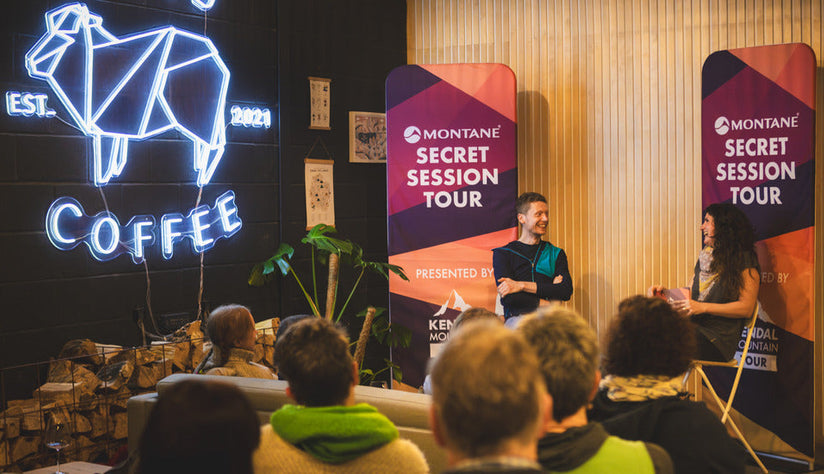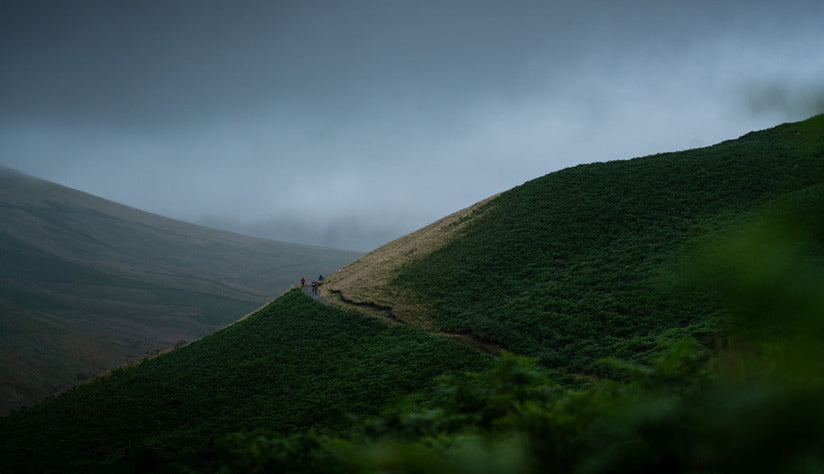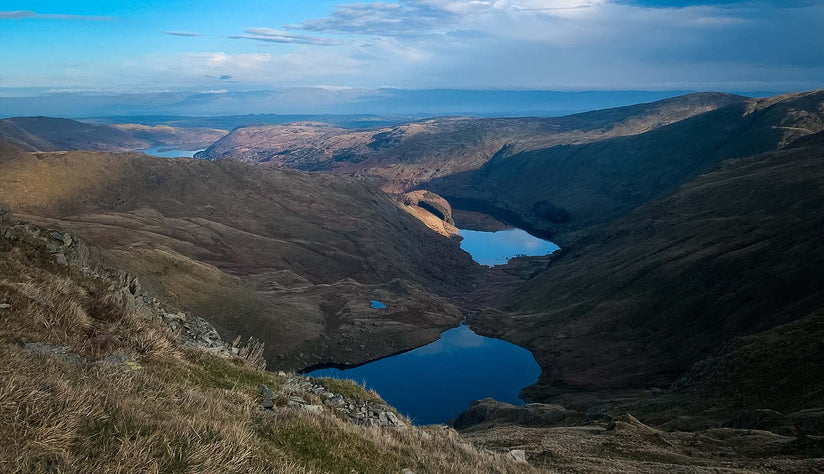In 2021, Montane athlete Jessie Leong joined The Alpine Club’s ‘Women Rise Up Meet’. The project coincided with the 150th anniversary of the first female ascent of the Matterhorn by British climber, Lucy Walker in 1871. As part of it, female climbers were brought together from across the UK, Belgium, Poland, Germany, and the US. The aim was to provide an opportunity to climb as equals and pursue a range of technical 4000m peaks that were first ascended by Lucy Walker in the Alps.
Don’t miss this Q&A to hear what inspired Jessie to take part and what she learnt from the experience…

What made you join The Alpine Club’s ‘Women Rise Up Meet’?
For me, I was drawn to the opportunity of attending a meet in the Alps and I had a curiosity to meet other female climbers who were keen to climb with other women in an alpine environment. Forming connections and finding kindred spirits to share one’s bread and cheese with was a big lure. The meet up promised a community of women passionate about and comfortable with finding an existence close to a sharp edge. It was also about being part of something bigger, the shared experience of imagining what it must have been like to follow in the footsteps of British climber Lucy Walker. The meet will no doubt pave the way for a greater diversity of climbers to follow in Walker’s footsteps.
Still in its infancy, the meet has a huge potential to act as a powerful catalyst for there to be more opportunities for women to meet regularly in the Alps. It directs the spotlight on these first female ascensionists, as historical inspiration for future generations of female alpine climbers. Moreover, in a rapidly shifting environment, vulnerable to the effects of climate change, I hope that there might be ways in which we can continue to pursue trips without causing a huge detriment to the environment. In doing so, we will still be able to celebrate the achievements of Lucy Walker and Meta Brevoort in the next fifty years to come.

Had you ever done anything like this before?
Prior to attending the ‘Women Rise up Meet’, I had attended several trips to Chamonix, in the French Alps, after receiving support to attend the subsidized Alpine skills course through the Jonathan Conville Memorial Trust.
Following on from this, consolidating my experience meant returning on a biannual basis with my climbing partners to get on classic mountaineering routes up to AD+ at an altitude around 3,600m. Routes that stood out included the rock line of Petite Aiguille Verte, the comical mantle on Arête de la Table on Aiguille du Tour, climbing Point Lachenal and iconic Cosmiques Arete. Unlike this trip, we skimped on hut stays and had a much more ‘raw’ experience by bivvying!
In an alpine arena, relationships between climbers are even more significant, and I did a lot of my climbs in smaller groups – mainly with my hiking friends, sometimes in a three where we shared the responsibility as leaders. My climbing experience has also been influenced by my experience accrued as a trad climber through joining the Pinnacle Club, a climbing club for women climbers which also celebrated its 100th year anniversary in 2021.
For me, the joint decision making, commitment and judgement of route meant I was keen to attend a meet that was about finding other Alpine climbing partners. In women-only events, there’s no assumption of skillset or experienced based on gender, and the tenacity and general enthusiasm/ determination of climbing with other women has led to me enjoying several successful mountain days.
I’ve often found myself savouring these climbing moments with other women climbers who have been my equal. Sometimes they’re more technically advanced, but it’s also being aware of not letting ego dictate the aim of the climb. The opportunities have provided me with an invaluable level of support, learning and an opportunity for me to step up too as a climber and mountaineer.

Pioneering Alpinist Lucy Walker played a big role in the Women Rise Up Meet event. Can you tell us more about her?
1865 is often cited as the ‘golden age of mountaineering’ - yet when we think of mountaineering, it’s been the names of Whymper, Willis and Lord Francis Douglas, rather than Lucy Walker and Meta Brevoort. Walker, a British climber from Liverpool born in 1836, was one of the foremost mountaineers of the 19th century. No lesser figure than Edward Whymper himself commented that “no candidate for election in the Alpine Club...ever submitted a list of qualifications at all approaching the list of Miss Walker”.
With a truly impressive CV, if Lucy Walker had a UKC logbook she’d have been climber of the decade - making the first female ascents of 16 mountains, including the Eiger, as well as taking part in nearly 100 expeditions. In 1871, she and Brevoort both sought to be the first woman atop the summit of the Matterhorn. While Walker achieved this on the 21st of July that year, Brevoort had no less an impressive season, claiming the first female ascents of the Weisshorn, Bietschhorn, and the Dent Blanche, as well as becoming the first woman to complete the Matterhorn traverse.
After reading lots of male-focused stories in the golden age of climbing, coming across the story of Lucy was incredibly refreshing. Standing at a staggering 4,478m, the Matterhorn really is a photographer’s clickbait – a peak of great significance in the region and one that had previously only been attempted by men. To this day she remains a huge inspiration to many climbers, both men and women alike she was certainly a gender bias breaking trailblazer!
Something that personally struck a chord with me was a famous ditty that the satirical magazine Punch wrote. In it they summed up the novelty of ‘No peak rise above her’, stressing Walker’s status as the most impressive mountaineer of her time, rather than focusing on the perceived anomaly of not fitting into the austere Victorian ideals society expected of women. Reminding ourselves of the eras limitations of fast transport, communications, reliable weather reports as well as the fact they had to climb in restrictive heavy skirts, makes their achievements during the ‘golden age of mountaineering,’ even more impressive.
‘No glacier can baffle, no precipice balk her,
No peak rise above her, however sublime,
Give three times three cheers for intrepid Miss Walker
I say, my boys, doesn’t she know how to climb!’
A Lady has Climb to the Matterhorns’ Summit, from Punch Magazine, 26 July 1871

Did you have a favourite climb and why?
Prior to heading out, I’d had an inkling in my mind that I’d like to follow exactly in Lucy Walker’s footsteps up the Matterhorn mountain. The meet took place in late August/ early September, which also restricted our options as the Matterhorn required specific conditions to limit its rockfall potential. Thanks to the effects of global warming, we’d also be trying to climb a route which no longer had a permafrost as approached in Lucy Walker’s era and was much more susceptible to rockfall/ loose snow and ice developing on route, making it more dangerous. After consulting several climbers in the Alpine Club, all of whom have climbed the Matterhorn independently, they actually advised me against this specific route. This was due to the complex route finding, combined with difficult logistics. The Hornli hut also gave priority to those attempting the supported by Zermatt guides, over non-guided climbers climbing as equals. Plus – it’s also a route known for a high level of choss (rock that is unsuitable for climbing!).
A climbed I enjoyed far more – and was still a reasonably challenging objective, was climbing Zinalrothorn, a 4221m peak. Which we did as a group of three. First climbed by Lucy Walker on 26 July 1873, it would be nearly 150 years since it was first ascended by a woman. Thanks to the lack of mechanical uplift, it would mean starting from 1600m from the valley floor in Zermatt and aiming for the Rothornhutte SAC just shy of 3200m. It was hard to comprehend its scale from the campsite in Randa as the valley was enclosed by such mountainous peaks. For reference, this is deemed a reasonable 4000m peak when climbed without gondola/ lifts, according to Richard Goedecke’s ‘4000m Peaks of the alps’. This sits just behind Dom at 4545m and Weisshorn at 4505.
We also climbed Pollux, 4092m, which was first climbed by 2 women (Anna and Ellen Pigeon) on 3 September 1874, and Breithorn, 4164m which was ascended by Lucy Walker in 1865. However, these peaks were somewhat tamed by the option to get the cable car from Zermatt to Kleiner Matterhorn, which takes you past some breathtaking (and notably hostile) glacial terrain.

Do you have any advice for women looking to climb in the Alps?
My advice for women looking to climb in the Alps is to be open to dialogue with your climbing partner. Have you climbed with them before? And if so, what intentions have you both got? Discussing areas of strengths and weaknesses was key so that myself and my climbing partners felt we complimented each other well – my multi pitch climbing on steep granite was served well from climbing on Arran and Cornwall, whilst my partner (who was based in Switzerland) had a lot more mileage at altitude moving fast.
Having the support of Montane has also helped ensure my kit was multi-functional. The key things to consider including having super lightweight, durable kit such as the High altitude 20L pack, which allows me to store ropes on the outside and pack considerately. Long sleeve tops that are breathable such as the Blade Long sleeve top allowed me protection from the high level of UV. I also packed the Montane Black insulated Jacket - which provided a much needed back up when the temperature dropped, and meant I needed reliable warm layer, as temperatures plummet at 4000m +.

This year’s international women's day theme is #BreakTheBias. How do you think we can collectively do this?
We can do more to be open, honest and, if needed, vulnerable about what we’re ok and not ok to do in Alpine environments. Often with Alpine climbing there’s lots of ‘mind chatter’ we bring to the equation that we don’t necessarily vocalize. Alpine climbing is high risk, expensive (in terms of time taken off, cost of living, cost of transport) and this can add additional stress factors, such as the cost of lifts and huts which might otherwise affect which route you do.
Having honest conversations on what your budgets are can really help. Part of this is figuring out what the areas of the expedition are that you’re willing to compromise on. For example: camping in the valley, eating pasta for dinner and living cheaply to afford hut nights.
I’ve also learnt from climbing with women to factor in rest days – on ‘high output trips’ I’ve enjoyed a range of activities, including sport climbing at moderate grades, to swimming in glacial lakes (a way to tell my mind to be still.) I know I can personally be resistant to resting – and I’m learning to be ok with not doing days back-to-back - ultimately knackering myself at altitude.
Looking for more IWD22 inspiration?
Take a look at Jessie Leong's athlete profile to find out more about her inspiring achievements over the years.
Jessie is part of our growing female athlete community, which includes Jenny Tough, who last year completed her epic run the world's mountains challenge. Discover what she learnt from this incredible solo expedition in her dedicated blog.

















